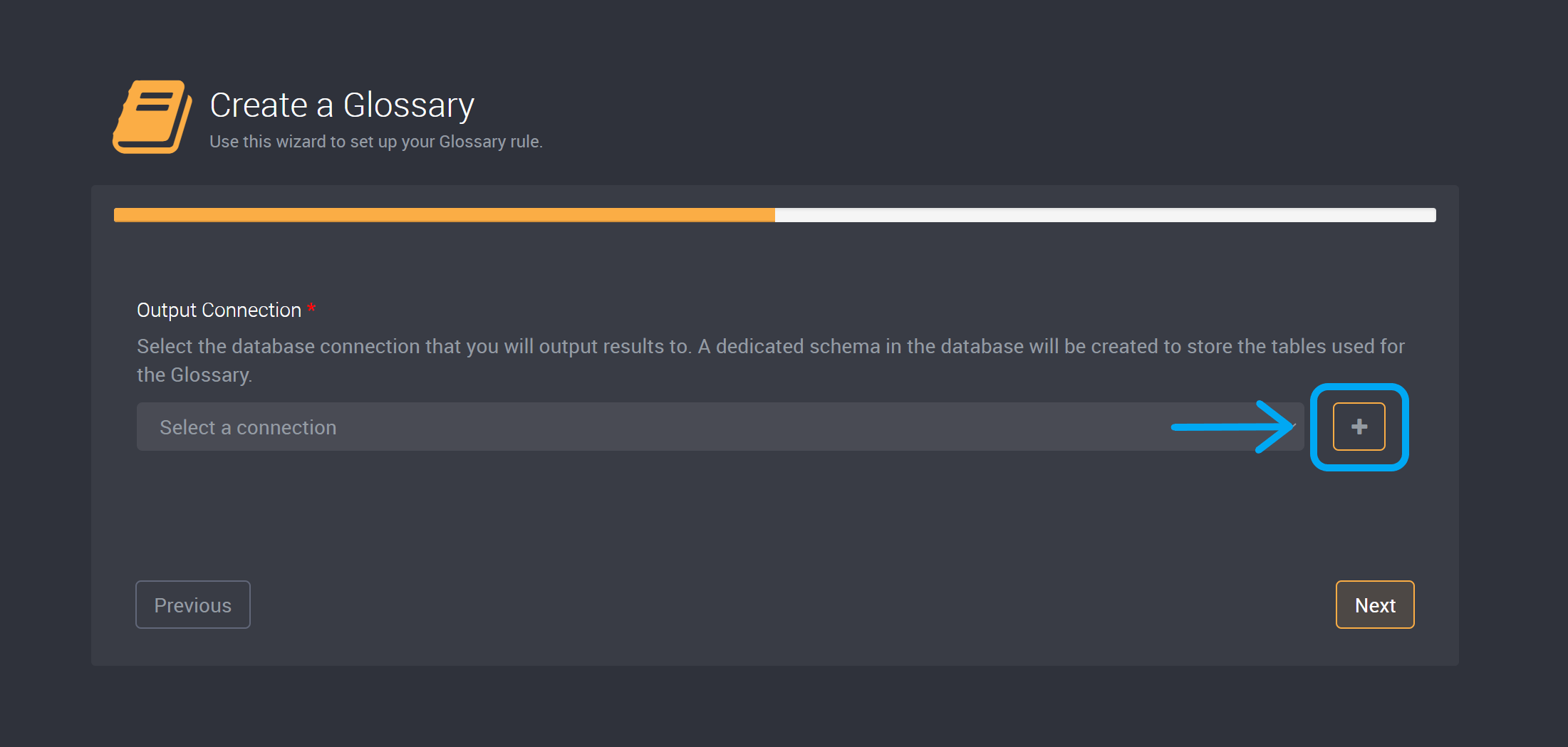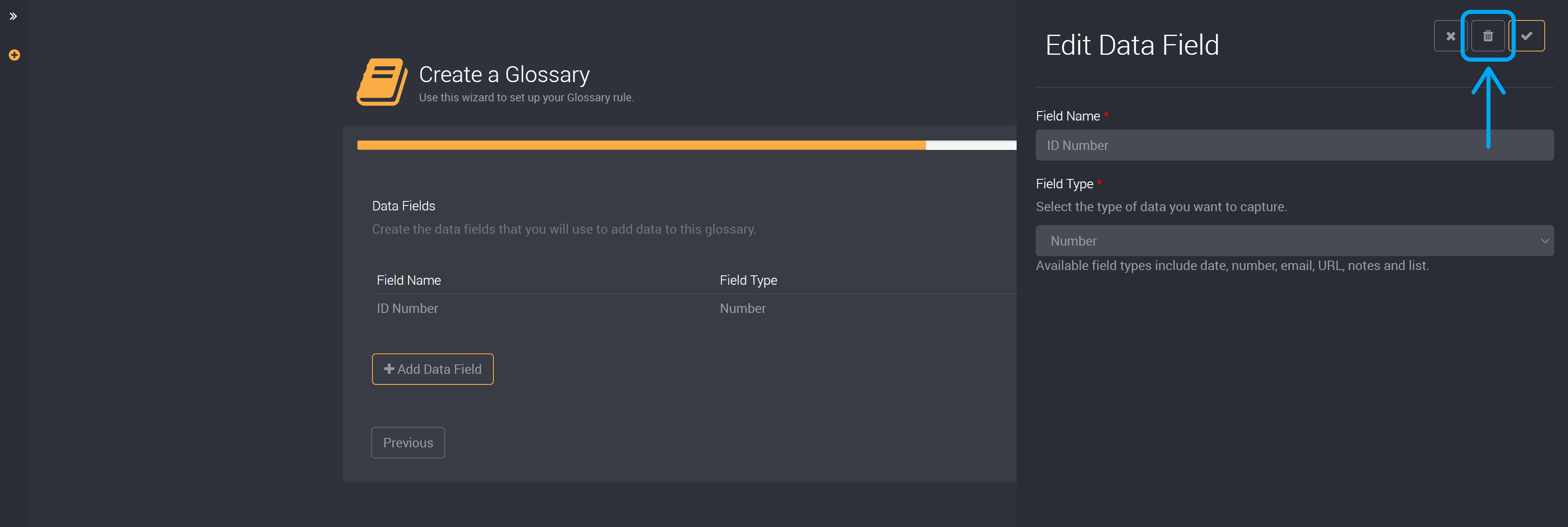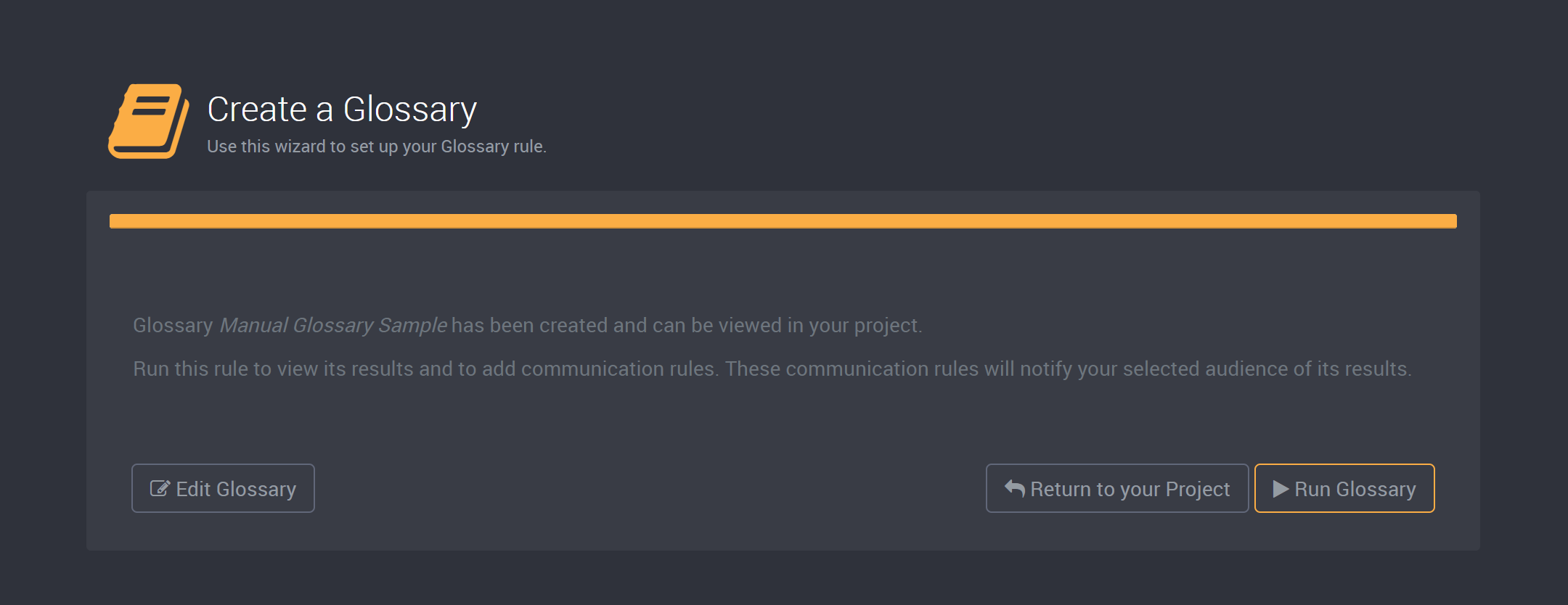How to Create a Rule using Manually Entered Data
In a glossary or reference, you can choose to manually enter data to your results table. Select one of the following options when choosing your data source to manually add rows.
Manual Data
You can create a rule where you can add records to a blank table in your selected target connection.
This table is created in Loome Monitor and will be available in your selected target database.
Both Source Query and Manual Data
You can also choose to create a rule that will both source data from your selected data source and also provide you the option to add new rows to that data set on the results page.
If you have chosen to add manual rows to your source data, once you have selected Source and Manual you can continue to create the rule as you would if it was a source data rule.
If you would like to learn how to add new rows to the results of your source query and manual data rule, you can jump ahead to the next section.
Creating a manual data rule in Loome Monitor consists of the following steps:
- Select your rule type
- Select your target connection
- Create data fields
- Select a key column
- Run the rule
The following steps will apply whether you are creating a reference or glossary rule. We have chosen a glossary for this example but these steps apply to both rule types.
First click on Create New Item at the top-right of your selected project to get started.

Choose whether you would like to create a glossary or reference.
You can only add manual records to a glossary or reference so we will select to create a glossary for this example. To create a reference, follow these same steps.

Choose your Name, Description and Agent
The first step in creating a rule, no matter the type, is to provide a name for the rule. Rule names should be user friendly, unique, and are summaries of the purpose of the rule.
You also have the option to add a description for this rule. Here you can describe the rule and its purpose in more detail. This will display in card and list view of your project.
Then select an agent that will execute this rule. An agent contains all the code that allows rules to run.

Choose Between Source or Manual Data in a Glossary or Reference
In a glossary or reference, you can then choose whether this rule will obtain its data from a source or if you will manually enter data.
You can choose to use both source and manually added data. If you have selected to create a source and manual rule, follow the guide here as the process is the same as creating a source alert from this step on.
We will create a manual glossary rule for this example, so we will choose ‘Manual Data’.

You cannot change the data source type once you have created a rule.
Choose your Connections
A manual rule consists of only the output connection.
Select the output connection and a dedicated schema will be created in this database connection.

Add a Connection
If you would not like to use an existing connection, you can also choose to create a source or output connection here using the Add button beside the connection dropdown fields on this page.
(If you have already chosen your connections, skip ahead to add your data fields.)

Choose the connection type, provide its details, and you will then be able to select it in the connection dropdown.


To learn more about connections and their requirements please read our guide here.
Create Data Fields
We will then create the data fields that will be used to create a manual data set.

Data fields are very similar to custom fields, but are instead used to populate the data of your manual rule. Loome will create metadata and results tables for this data in your output target connection.
Click on Add Data Field and a slide-out will be expanded with the option to choose from six different field types.

| Type | Description |
|---|---|
| Date | This will add a field where users can select a date for each row. |
| Number | Users can attribute a number, such as an ID, to each row. |
| Users can attach an email that is related to a record. | |
| URL | You can add URLs to your data set. |
| Notes | This will provide fields where you can add notes, feedback terms and definitions. You can add up to 4000 characters to each note. |
| List | This field type allows you to provide the options that users can choose from. |
The following image is an example of different data fields you can add to a glossary.

If you edit a data field that is used in a communication rule, please then check the recipient column of the communication rule to ensure that it runs successfully.
Please also note that support for renaming a column is not available in Azure Synapse Analytics GA as of February 2021. Thus renaming an existing custom field column may not work when using Azure Synapse Analytics as a target connection.
Please note that you cannot create a data field with the same name as system generated columns.
How to Delete a Data Field
To delete a data field, click on Edit Data Field.

This will expand a slideout, click on delete in the top right corner.

You will not be able to delete a data field if it is used in a communication rule. Change the data field used in that communication rule to another column in order to delete this data field.
Select your Key Column
In this next window, select one or more Key Columns for your rule.
Examples of key columns are unique identifiers such as primary keys or a combination of columns to form a composite key. In the event of Key Columns not being entirely unique, Loome Monitor will not behave as expected.
In order to create a rule that will persistently stage your data and perform communication steps accordingly, you will need to choose at least one key column and also leave at least one column unselected.
In the example below, you will see that we can select one of the data fields created in the step before.

We will need to provide a unique value in this field for each record that we add after we have run this rule.
Please note that rules that use a SQL connection as a target connection will use clustered indexes. If you choose any individual key column size that exceeds 900 bytes or if the sum of all key column sizes exceed 2600 bytes, you will need to confirm your key column selection as these columns can cause your data to be truncated.
If you change your selected key column after you have run a rule, any existing data in this rule will be archived when the rule is next run. Archived tables will include the date it was archived in the table name. The newly created tables will continue to be created using the rule ID number as its name.
Create your Rule
Click on Create to save and complete this rule.
You will be shown a page where you have the option to either return to your project, edit, or run this rule.

Run this Rule
Run this rule and it will generate an empty table where we can add records. These records will be saved in the table in the target connection.
Once you click on Run, you will be able to see the progress of this rule in an expanded slideout where each step is listed under ‘Execution Steps’.

If the rule execution failed, you can also see which steps have failed in this log. You will also be able to see an error log under the title at the top.
Once you have run this rule, you will have your results table ready and you can add records to your data set.
Click on the Results button, which is the table icon in the top-right of these execution steps, to be directed to your Results page.
You can also run this rule from the slide-out when editing a rule, and on the rule’s project page using the Run button at the bottom corner of each rule card.